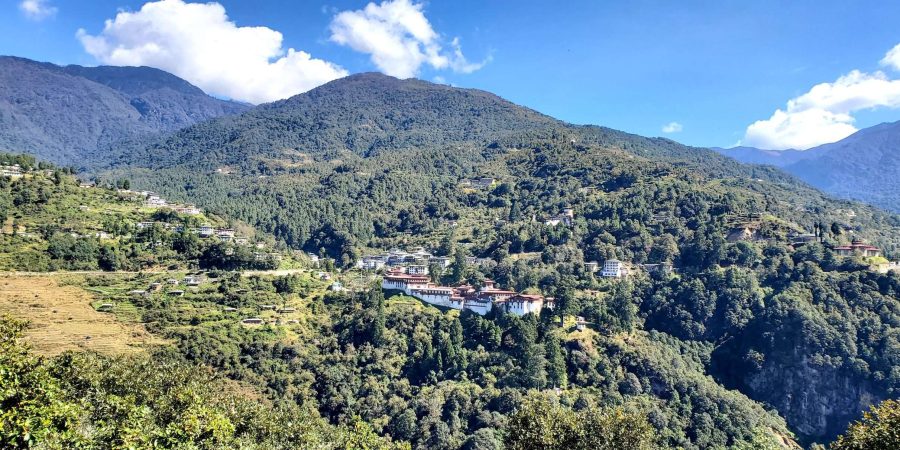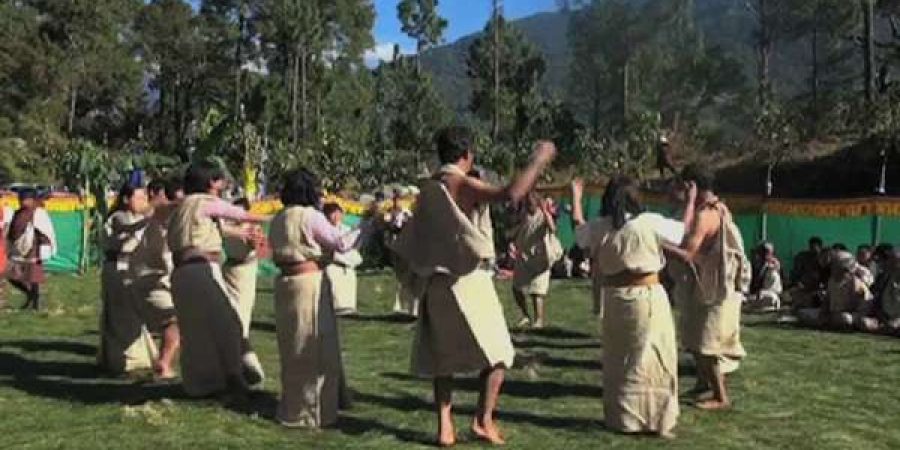This region is centrally located in Bhutan and is rich in history and natural beauty, spanning an area of 1810 sq km. It is famed for the strategic and historically significant Trongsa Dzong, which has deep ties to the royal Wangchuck dynasty. The region is characterized by its steep and heavily forested landscapes, which range from elevations below 1000m to over 5000m, encompassing the diverse Jigme Singye Wangchuck National Park. While many visitors make a brief stop in Trongsa en route to Bumthang, a few adventurous souls venture south towards Zhemgang and the wildlife-rich Royal Manas National Park.
The journey from Pele La to Trongsa is a remarkable one, traversing the Black Mountains over the Pele La pass at 3420m before descending into the broad, heavily cultivated Mangde Chhu valley, a place where one might spot grazing yaks from the road. The route is peppered with picturesque stops like the Chendebji Chorten, a large white chorten patterned after Kathmandu’s Swayambhunath and built to cover the remains of an evil spirit. This landmark signifies the historical and spiritual essence of the region.
Trongsa town itself, perched above a gorge, offers panoramic views of the Black Mountains. The town, with a population of 3100 and an elevation of 2180m, is a hub of tradition, lined with whitewashed shops and bustling with the activities of its residents, many of Bhutanese Tibetan descent. The strategic location of Trongsa, at the junction of roads leading to Punakha, Bumthang, and Gelephu, and separated from both east and west Bhutan by high mountain ranges, underscores its significance as a central point in the country, both geographically and historically.
Map
Interesting Facts
- Strategic Location and Historical Significance: Trongsa is situated in the heart of Bhutan and plays a pivotal role in the country due to its strategic location. It has historically served as a vital junction for roads leading to Punakha, Bumthang, and Gelephu. The Trongsa Dzong, which the town is known for, is historically important with deep ties to the royal Wangchuck dynasty.
- Trongsa Dzong: The Dzong is not only a significant historical structure but also a marvel of Bhutanese architecture. It is perched above a gorge, offering spectacular views of the Black Mountains. The Dzong’s location and architecture symbolize the central role Trongsa has played in Bhutan’s history.
- Diverse Ecosystem: The region encompasses the Jigme Singye Wangchuck National Park, featuring steep and heavily forested landscapes that range from below 1000m to over 5000m in elevation. This diversity supports a wide range of flora and fauna, including the possibility of spotting grazing yaks near Pele La.
- Cultural Hub: Trongsa has been a cultural hub, receiving a large influx of Tibetan immigrants in the late 1950s and early 1960s. The town is characterized by traditional whitewashed shops run mostly by Bhutanese of Tibetan descent, contributing to the rich cultural tapestry of the region.
- Chendebji Chorten: This significant landmark near Trongsa is patterned after Kathmandu’s Swayambhunath and was built in the 19th century to cover the remains of an evil spirit. It marks the westernmost monument in a ‘chorten path’ that traces the route of early Buddhist missionaries, highlighting the spiritual significance of the region.
- Geographic Diversity: The geography of Trongsa is marked by the dramatic shift from the windswept town of Wangdi across the Black Mountains and into the cultivated valleys of Mangde Chhu, showcasing the region’s vast geographic and ecological diversity.
- Economic and Ecological Importance: The area is also known for its economic activities, including the new 720MW Mangdechhu hydroelectric dam and power station, which began generating power in 2019. This project underscores Trongsa’s contribution to Bhutan’s energy sector and its ecological importance.
- Gateway to Adventure: While many visitors stop briefly in Trongsa en route to other destinations, the region serves as a gateway to the less explored south, towards Zhemgang and the Royal Manas National Park, offering opportunities for adventure and wildlife observation.
Attractions
No results found.



